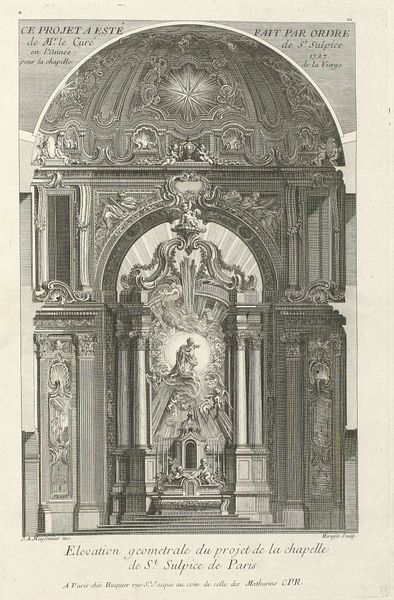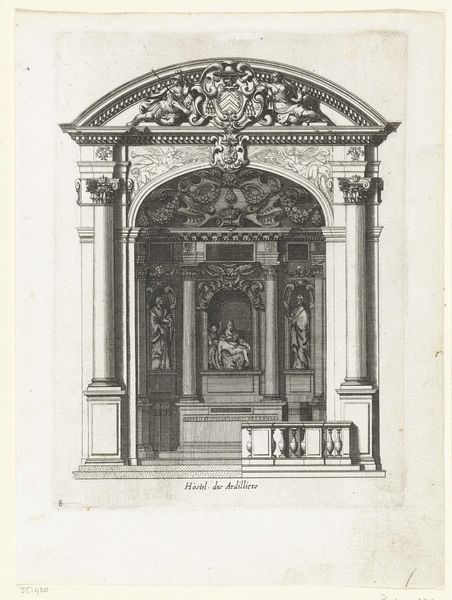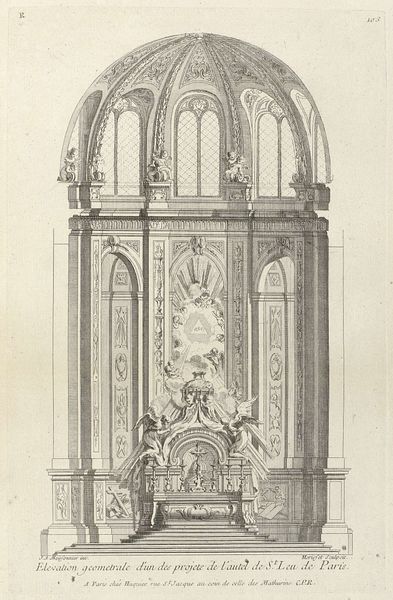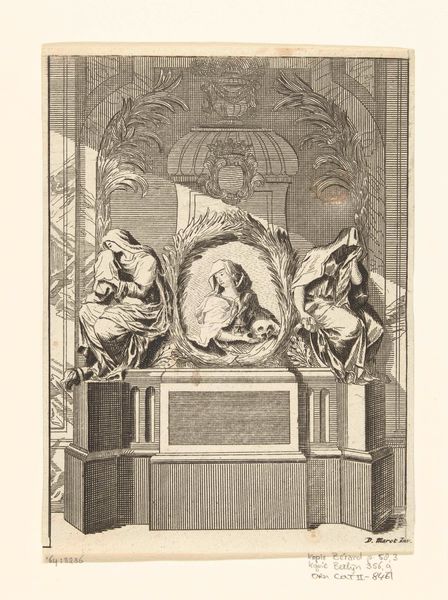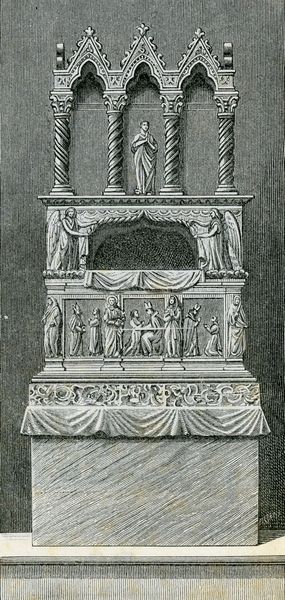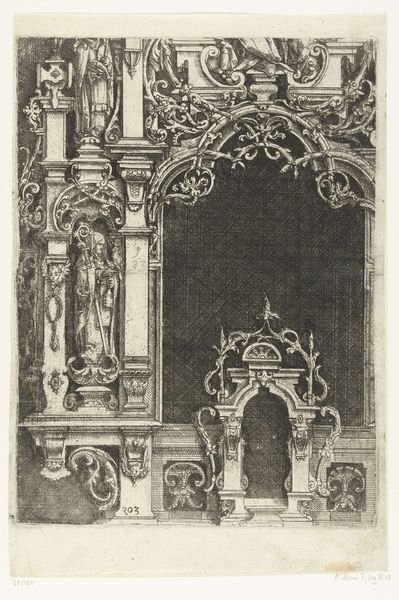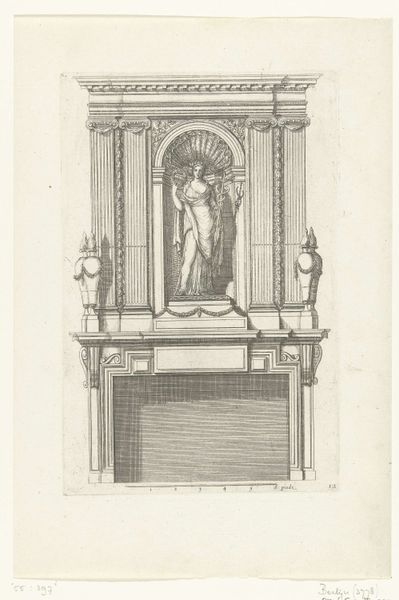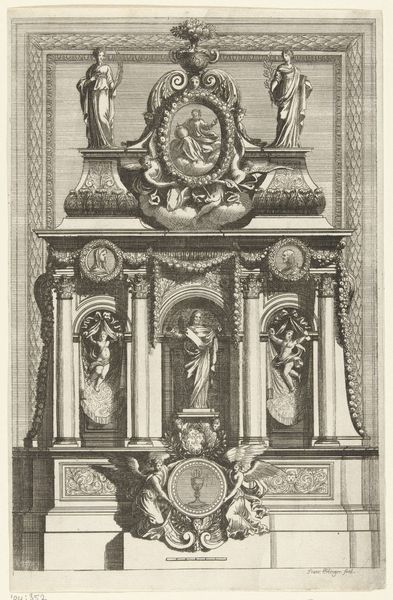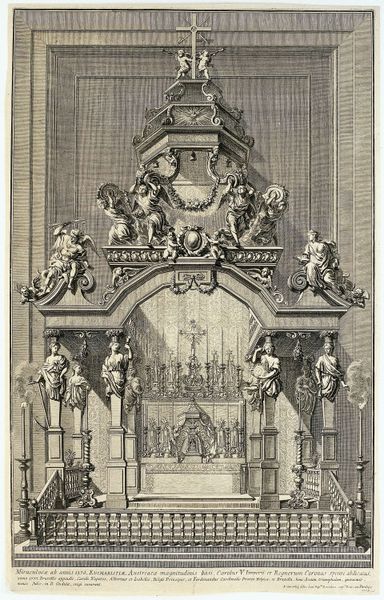
print, engraving
#
medieval
# print
#
history-painting
#
engraving
Copyright: Public domain
Giuseppe Barberis made this print of the Tomb of Guido Tarlati, who died in 1327, in the late 19th or early 20th century. Tarlati was a bishop and political leader in Arezzo, Italy. As such, the tomb can be seen to represent the intersection of church power and local politics. The tomb itself features a recumbent effigy of Tarlati and is decorated with scenes from his life. By focusing on his military and political achievements, it presents Tarlati as a powerful and influential figure. We can see how the image creates meaning through visual codes, cultural references, and historical associations. In particular, the tomb celebrates worldly power, rather than religious devotion. This print can teach us how the memory of powerful figures can be carefully crafted and presented to the public. Art historians use primary sources, such as letters and documents, as well as secondary sources, to reconstruct the social and political context of artworks like this, and to better understand the social role of art.
Comments
No comments
Be the first to comment and join the conversation on the ultimate creative platform.



